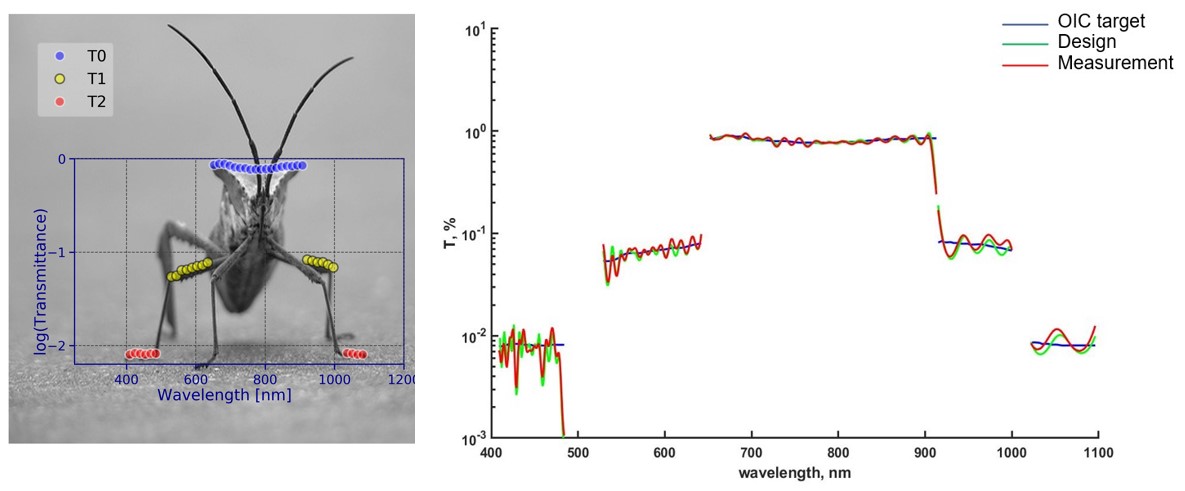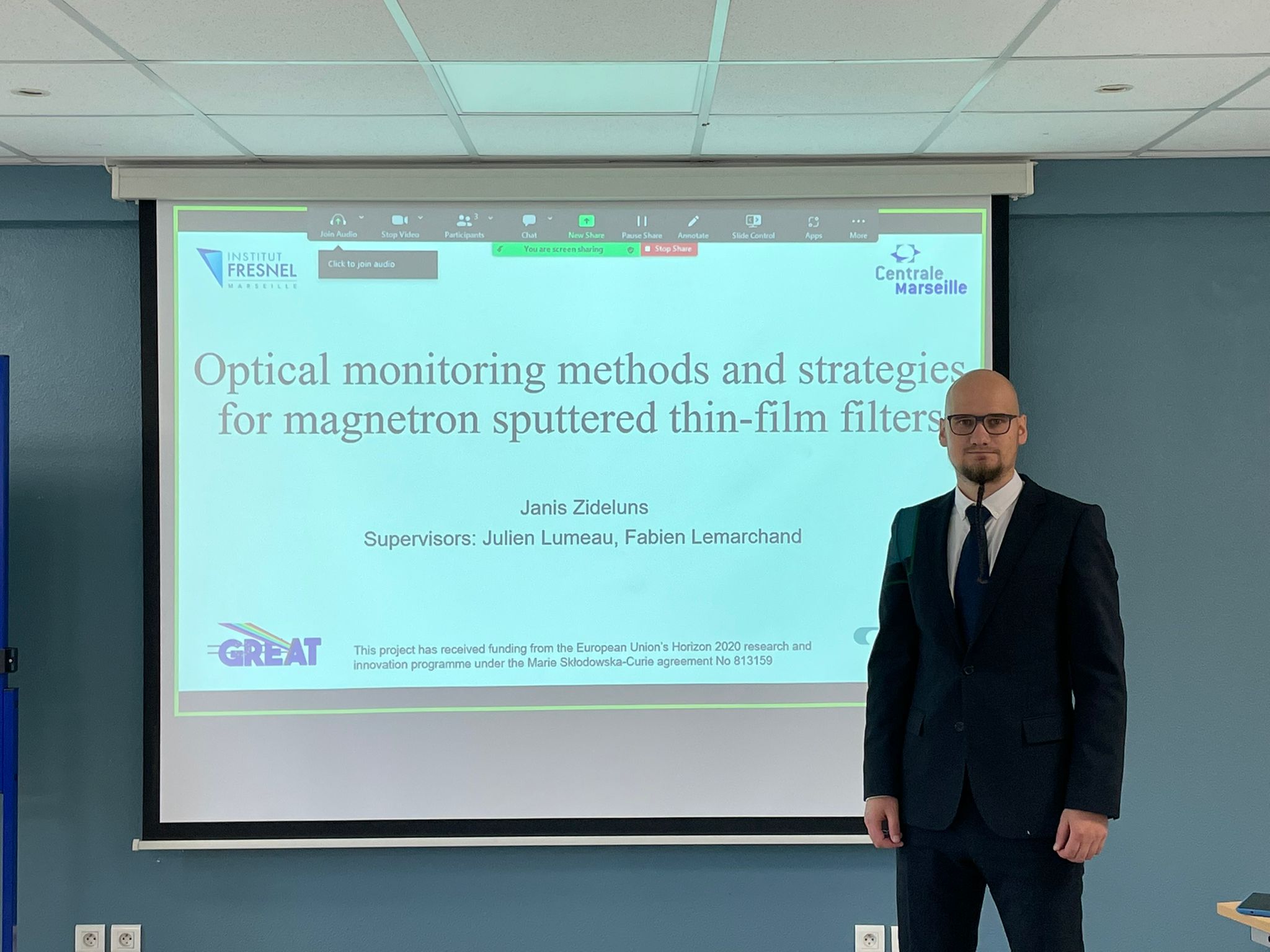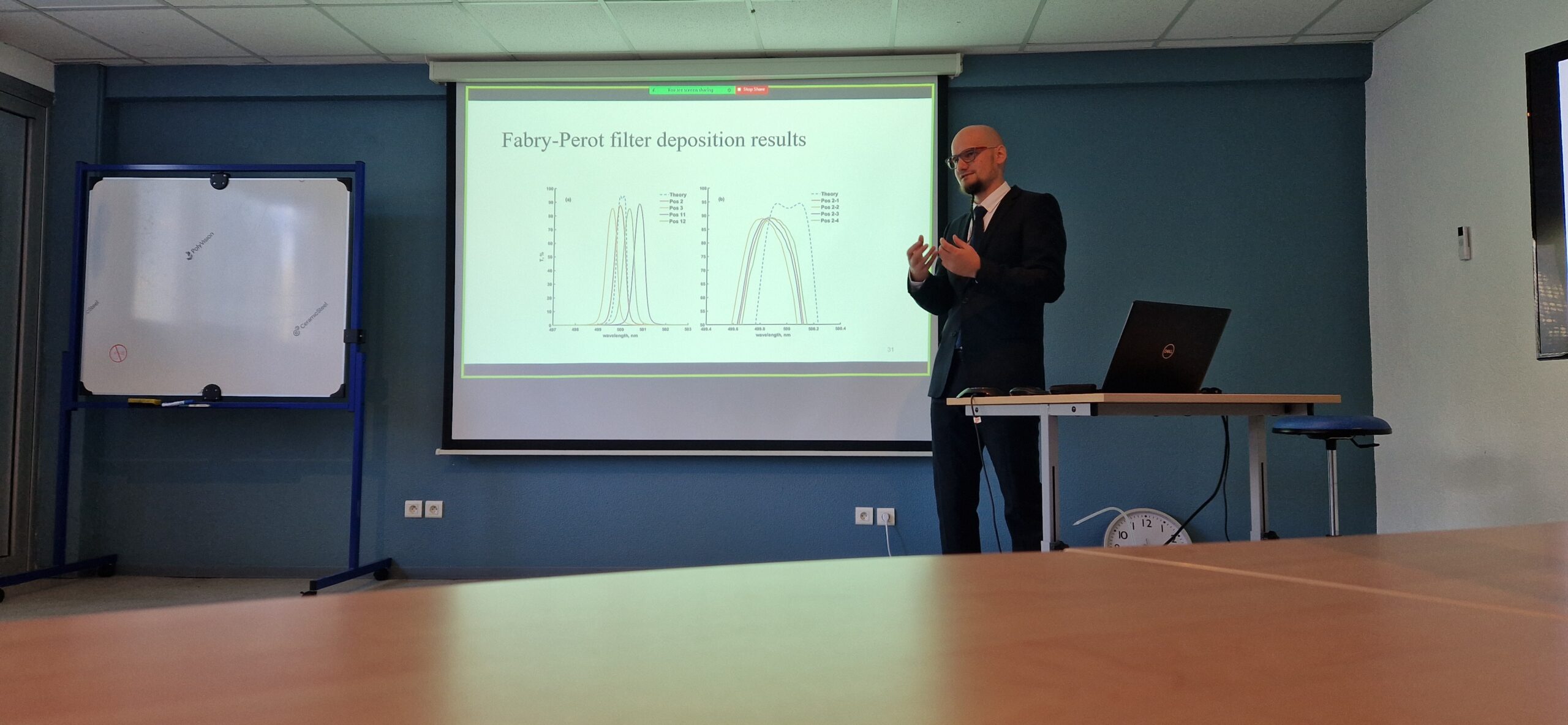December 2023: Muhammad Ghawas defended his PhD thesis titled «Picosecond and femtosecond ytterbium fiber laser source and its applications», supervised by Prof. Eric Freysz and Prof. Jérôme Degert, from Laboratoire Ondes et Matière d’Aquitaine (LOMA), University of Bordeaux.
Ultrashort laser pulses in both industrial and research applications progressively rely on fiber laser technology, guided by its intrinsic benefits, for instance, stability, compact nature, excellent beam quality, robustness, and easy operation. In this PhD work, a detailed study has been done to investigate picosecond fiber laser working in an all-normal-dispersion (ANDi) regime for the application of parametric generation in photonic crystal fiber. In summary, we have developed a high-power fiber laser source delivering picosecond pulses with tunability both in central wavelength and spectral width. At the central wavelength of ∼ 1030 nm and with a repetition of 78 MHz, this laser delivers picosecond pulses with an average power of up to 25 W. The pulse duration can be continuously adjusted from ∼ 1.8 ps to ∼ 4.5 ps and pulse energy from ∼ 320 nJ and ∼ 225 nJ, respectively. Additionally, we have also demonstrated that the central wavelength of the laser pulse can be finely tuned from 1010 nm to 1060 nm while keeping the pulse energy above ∼ 150 nJ. The output of this fiber oscillator is propagated through the photonic crystal fiber for the parametric generation of the signal (higher frequencies than the pump) and idler (lower frequencies than the pump). The fiber OPO singly-resonant cavity was built in such a way that only signal wavelengths are allowed to propagate through it. The conversion efficiency for the signal was close to 20 % in the fiber OPO. Based on the dispersion profile of the photonic crystal fiber and our homebuilt tunable pump laser, the signal wavelength (resp. idler) was tuned from ∼ 770 nm to ∼ 1000 nm (∼ 1130 nm to ∼ 1590 nm) for the corresponding pump wavelengths of ∼ 1024 nm to ∼ 1059 nm.
Keywords: Fiber-laser, Picosecond, High-power, Self-modelocked, Fiber-OPO
December 2022 : Ratish Rao Nagaraj Rao defended his PhD thesis titled « Fabrication of grating waveguide structures for spectral (and linear polarization) stabilization and wavelength multiplexing for 976 nm, 1030 nm, and 2000 nm wavelength range » , supervised by Prof Yves Jourlin and Emilie Gamet from Micro and Nanostructuring team of the Laboratoire Hubert Curien.
This Ph.D. work is part of the European project GREAT (Grating Reflectors Enabled Applications and Training). The project focuses on exploring production technologies through appropriate control of the manufacturing process of Grating Waveguide Structures (GWS) for high-power laser systems. The objective of this thesis is to develop GWS for spectral stabilization and wavelength multiplexing of a 976 nm emitting laser diode and a 1 µm emitting solid-state laser. The main focus of this work is on GWS fabrication by Laser Interference Lithography (LIL) and on optimizing this technique to obtain a better uniformity of the grating period. The LIL fabrication of GWS on multilayers is detailed from the fabrication of the multilayer to the final etching step. The fabricated gratings are then characterized optically and geometrically. The GWS sample used for a solid-state laser system emitting at 1 µm showed a diffraction efficiency of 92%. The fabrication of silicon (Si) molds is also detailed. This development is motivated by their eventual use as a buffer in the nanoimprint lithography (NIL) technique to produce GWSs faster and at a lower cost. An important result of this work is based on the quantitative study of an established technique, namely, the deformation of the substrate during the interferential lithography step to reduce the period variation due to the use of divergent exposure beams. Experimental results show an average reduction of about 85% in period variation for a 4-inch diameter substrate.
October 2022 : Marek Stehlik defended his PhD thesis titled « Laser damage resistance of coating materials and structures for grating-waveguides » , supervised by Laurent Gallais and Frank Wagner from ILM team of the Institut Fresnel.
The laser-induced damage and laser-induced contamination are phenomena limiting reliable operation of coating-based optical components in ultrashort pulse high-power lasers. To enhance the damage resistance of optical coatings, testing of various coating materials, development of optimized coating designs, and comparison between deposition methods have been done. Despite the efficient excitation of dielectric materials in sub-ps regime, indicating that laser-induced damage threshold (LIDT) should not be dependent on beam size, we found that this statement is not unequivocal in the published literature. Our work on metrology with 500-fs 1030-nm laser source underlines the difficulty of LIDT measurement by very focused laser beams and we suggest beam deformation due to self-focusing in the lens as a possible explanation. We performed LIDT tests with pulsed-laser deposited crystalline sesquioxides (Sc2O3, Y2O3, Lu2O3) and amorphous metal oxides (HfO2, Nb2O5, SiO2) coated by magnetron sputtering. We found that the LIDTs of sesquioxides are comparable to each other and in the multiple pulse test regime show values close to those of widely used HfO2 coatings. Since manufacturers of diffractive optical components frequently use Ti adhesion promoter and Cr hard mask forming thin layers on optical surfaces, we analyzed effect of such treatment on LIDT. We observed that the LIDTs of treated surfaces are close to the untreated ones, when they are tested by 100 pulses. Using 700-fs 515-nm 3.3-MHz setup we studied laser-induced contamination (LIC) growth in dependence on coating material, its deposition technique and its thickness. We found a nearly linear relationship between LIC deposit thickness and SiO2 and HfO2 coating thicknesses, indicating that the LIC growth might be connected to thermal effects caused by absorption in the coatings.
Keywords: Laser-induced damage threshold, Laser-induced contamination, Oxide coatings, Sub-ps pulses.
In this thesis the optical monitoring methods and strategies for magnetron sputtered thin film filters are described in great detail. As with any technologies, the requirements for the performance of the thin film filters increases, the number of layers in the designs grows and therefore the accurate monitoring of the deposited thicknesses becomes more and more crucial. Up to this day, there is no universal solution for the thin film thickness control, therefore depending on the design and application, one must choose how to control the thicknesses of the layers. Or in other words, one must determine a monitoring strategy before fabricating the filter. In order to determine the monitoring strategy, deep knowledge about the monitoring setup and the thin film filter itself is required. By carefully studying the deposition and monitoring processes and the filters themselves, we have highlighted multiple variables that can be used in order to determine the monitoring strategies automatically, aiming for a universal solution for the thin film thickness monitoring. The developed thought process for the strategy determination has been validated on various thin film filter designs.



